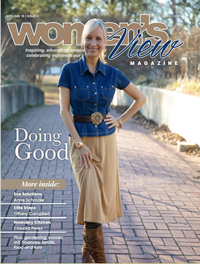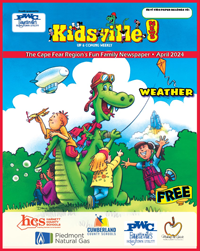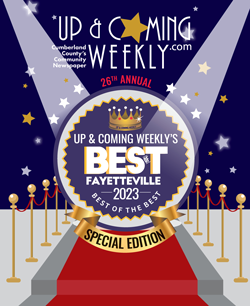- Details
-
Tuesday, 23 April 2024
-
Written by John Hood

 I’ve never been more delighted to be mistaken.
I’ve never been more delighted to be mistaken.
A couple of weeks ago, I wrote a column observing that, over the first eight months of the 2023-24 fiscal year, the state’s General Fund revenue was down slightly from what was collected during the first eight months of the previous fiscal year.
North Carolina faced no “fiscal emergency,” I wrote, but unless revenue collections were “bountiful” this spring, the General Assembly wouldn’t have lots of extra cash to work with during its short session.
Well, state economists have just released their consensus revenue forecast — and bountiful isn’t too strong a description. For the current fiscal year, they now expect $34.1 billion in General Fund revenues. That’s $413 million more than originally projected. As for the $34.4 billion now expected for FY 2024-25, that’s a full $1 billion more than the budgeted amount.
Why was this year’s “April surprise” so pleasant? Collections from the personal income tax finance about half our General Fund and typically drive our revenue trends. That’s true this time, as well, as income taxes are now expected to run 2.6% above the baseline this year and 4.2% next year. Sales taxes are also up, albeit more modestly.
Contrary to the expectations they formed last year, economists for the legislature’s Fiscal Research Division and the governor’s Office of State Budget and Management say our economy “demonstrated greater resilience and avoided a predicted period of stagnant growth, or ‘slowcession,’ in late 2023 and 2024. Instead, the April 2024 consensus forecast expects a ‘soft landing,’ with inflation easing toward the Federal Reserve’s 2% target even as the economy continues to grow at a modestly slower pace than in 2023.”
Could their new judgment be overly sanguine? Sure. Forecasting isn’t an exact science. But it’s now very likely the state will experience a surplus in General Fund revenue of about 1.2% for the fiscal year ending in June. And it is now reasonable for state legislators to assume something like a 3% overage when adjusting the General Fund budget for next year.
They’ll have more transportation dollars to work with, as well. Strong collections from the state tax on motor fuels will generate about $104 million more than projected this year for the Highway Fund and Highway Trust Fund, plus another $101 million next year.
Given the circumstances, you’d expect every state agency, local government, or private interest to line up at the Legislative Building, ready to pitch — and you’d be right!
As I have previously argued, some of these pitches ought to deliver results, as they are in the public interest and consistent with fundamental principles of fiscal conservatism. Lawmakers ought to raise pay for public employees, for example, with a particular emphasis on merit-based increases and hard-to-fill positions such as correction officers, lab technicians, and science teachers.
Also deserving consideration is the community college system’s Propel NC initiative, which would allocate more funds to high-demand fields such as advanced manufacturing, public safety, and allied health while instituting a three-year cycle for reevaluate spending based on job and salary data.
North Carolina is already in the process of phasing out its tax on corporate income and reducing its flat tax on personal income. That’s why next year’s revenue, while likely to exceed original projections, will rise just 0.7% over 2023-24.
Tax cuts are already baked in the cake, as it were. Still, the revenue revisions give lawmakers more fiscal space to tackle other tax-reform priorities while devoting additional funds to the Opportunity Scholarship program, which has attracted far more parents seeking educational alternatives for their children than currently funding can accommodate.
Under existing law, a portion of the General Fund revenue surpluses will flow automatically into state reserves and fund the construction and maintenance of public facilities. Prudence argues for devoting additional funds to high-priority infrastructure projects and to shrinking the unfunded liability in the state’s health plan.
There’s good news on revenues. Now, let’s keep delivering good policy.
Editor’s note: John Hood is a John Locke Foundation board member. His latest books, Mountain Folk and Forest Folk, combine epic fantasy with early American history (FolkloreCycle.com).
- Details
-
Tuesday, 16 April 2024
-
Written by Craig Stewart
 Publisher’s Note:
Publisher’s Note:
I’m yielding my editorial space to publish a Letter to the Editor we received from a Fayetteville resident who addresses a major (and common) local safety concern that weighs heavily on the hearts and minds of thousands of Fayetteville residents. I applaud this writer for his bold initiative in attempting to bring his concerns to our city leaders.
It is my hope, that this letter will inspire and motivate others to get involved by voicing their opinions and sharing their experiences with elected officials. This is the ultimate way to effect change. Thank you for reading the Up & Coming Weekly community newspaper.
— Bill Bowman
I went to the April 3rd meeting of Fayetteville City’s Council Community Safety Committee to voice my complaints over speeders with their ear-piercing, unmuffled cars and motorcycles. I never knew we had such a committee until I was directed there by the 911 operator.
I came prepared with a speech and expected to see many more like-minded concerned citizens present, but I was the only non-committee member there. Maybe not too many people know about this resource. Interesting.
I was cordially greeted and asked the nature of my presence. I told them my intentions and gave the Chairman of the Committee, Council Member Mario Benavente, a copy of my presentation since I would not be allowed to present it. He said the first step for concerns like mine begins with my District Five representative, Lynne Greene.
He took my contact information, and I showed myself out. This is my speech to the committee:
Fayetteville police do not rule the streets. They are overwhelmed by speeders with their ear-piercing, unmuffled cars and motorcycles. The lack of police cars with radar is only part of the problem. In my opinion, the will to enforce the law is also lacking. (At this point, I was going to relate my personal experience.)
My wife and I were waiting to turn left from S. McPherson Church Road onto Raeford Road when a speeder ran through the red light just before I was about to turn.
I looked up and saw a police car sitting at the BP station facing the intersection. Both my wife and I said at the same time, "Look at that!". I made the turn, and my wife said, "You go over there to that policeman and ask him why he did not go after that car!"
I resisted, but she was insistent. So, I did.
I came up to his window, and he was very nice. He answered me, "I don't have radar."
He also said he was one of only two officers available for the entire area. This incident caused me to question the city's resolve to provide an adequate police force with proper equipment—end of story. My presentation continues.
South McPherson Church Road and the All-American Freeway serve these lawbreakers as their personal Indianapolis 500. Also, misfits draw doughnuts in intersections and parking lots, showing contempt for authorities and private property owners.
You should take it personally and direct more funds to the police force. Without safety and respect for the law, you cannot pursue other projects to improve the city—end of presentation.
The constant blaring of speeding, unmuffled cars, and motorcycles just got too much for me recently, which is why I called 911. This led me to the Community Safety Committee on where I received their meeting agenda and the minutes of their last meeting on March 6, 2024.
I then focused on one agenda item and two organizations I was not familiar with:
1. Driving Equality Laws Presentation Recap (agenda item)
2. Emancipate NC (organization)
3. Forward Justice (organization)
Upon reviewing the minutes, I noticed both Emancipate NC and Forward Justice made presentations to the committee, and received general approval with City Council Member Banks-McLaughlin saying there was "great dialogue between Fayetteville Police Chief Braden and Attorney Carpenter" of Forward Justice.
What is Emancipate NC, and who is Forward Justice? Emancipate NC has a website that states, "It is an organization founded on the knowledge that incarceration and structural racism is harmful.
It is an organization dedicated to shifting the narrative on racialized mass incarceration through community mobilization.” They maintain that the mainstream narrative that criminalizes Black and Brown people must be transformed.
The Forward Justice organization is a nonprofit center in Durham, NC, dedicated to advancing racial, social, and economic justice in the South. This group challenges laws, policies, and practices that harm the most vulnerable in society- the Black, Brown, and poor populations, keeping them from full liberation.
You should Google these groups for yourself. They are anti-capitalist (Marxist), anti-police, and anti-law and order. They promote the ideas of systemic governmental racism and racial injustice.
So, why do these organizations have the ear and endorsement of our city council without public knowledge?
Does not the law read the same no matter what race you are? Is there a need for any organization to cheer on one race over another? Justice must be blind no matter what your situation is.
I went to the April 3rd meeting to complain and voice my concerns about noisy, speeding, and contemptible behavior on the roadways. I came away more troubled over what appears to be a bigger problem.
Craig Stewart
Fayetteville, NC 28314

 Both of my readers have seen Disney’s Snow White. Today, we rip the lid off Disney’s prettified version. The original Snow White story by Grimm is actually grim. The real story has it all: wicked step mother, fried animal entrails, dwarves, attempted cannibalism, stereotypical women’s work, necrophilia, and red-hot iron dancing shoes. Let us begin.
Both of my readers have seen Disney’s Snow White. Today, we rip the lid off Disney’s prettified version. The original Snow White story by Grimm is actually grim. The real story has it all: wicked step mother, fried animal entrails, dwarves, attempted cannibalism, stereotypical women’s work, necrophilia, and red-hot iron dancing shoes. Let us begin.
 How to resolve AdBlock issue?
How to resolve AdBlock issue? 













